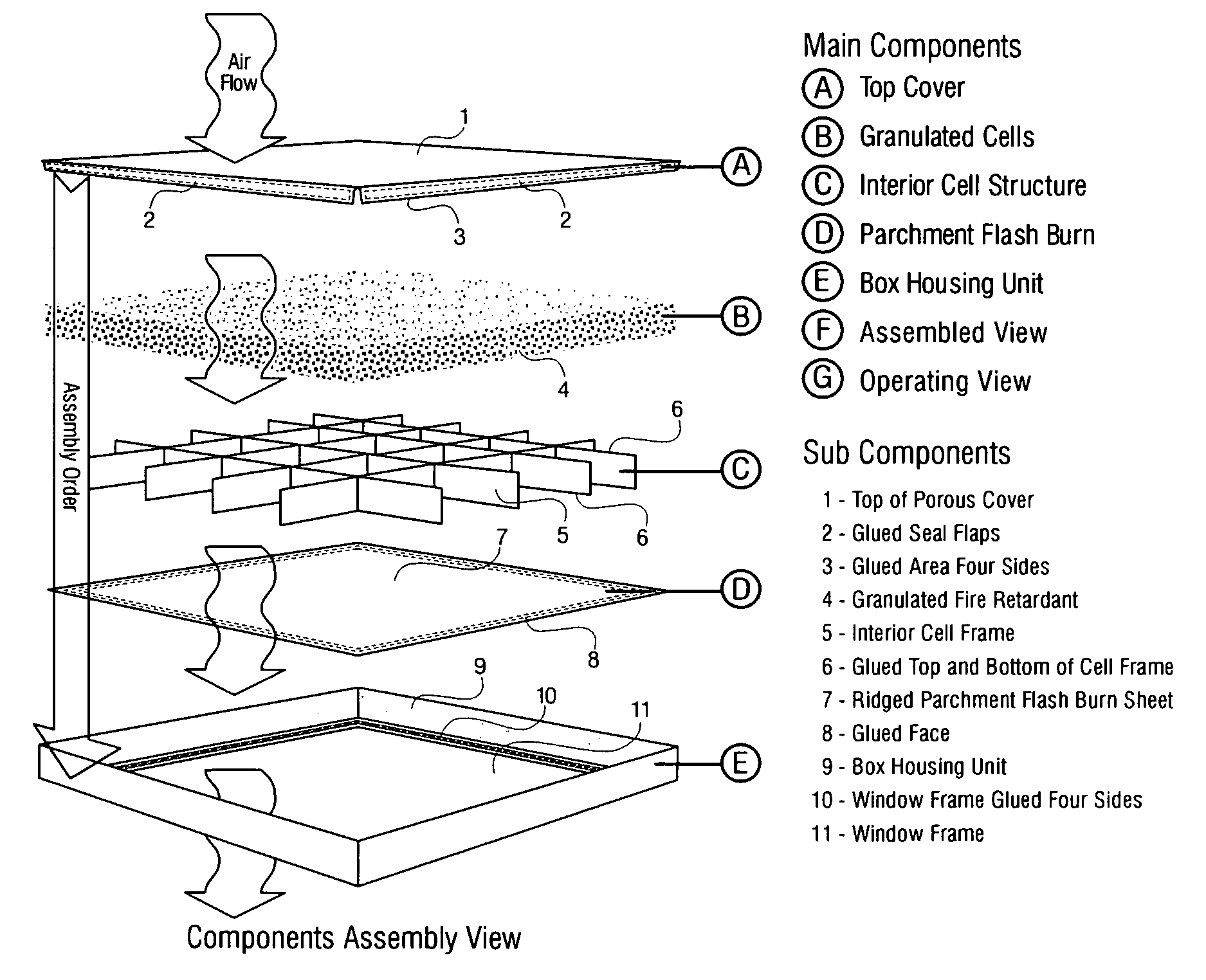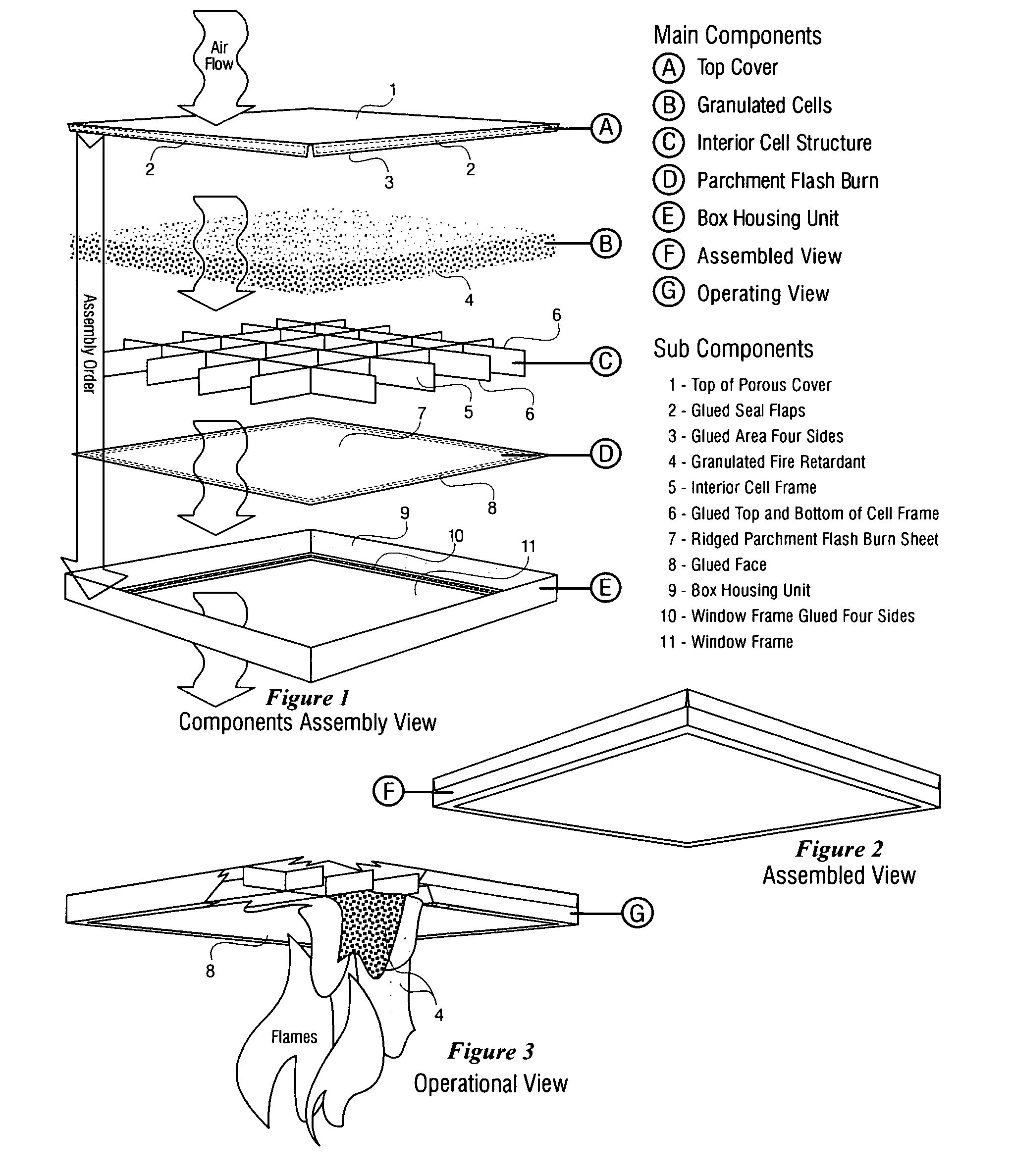Ceiling fire extinguishing system with lost air filtration - the ceiling firefighter™
a fire extinguishing system and ceiling firefighter technology, applied in fire rescue and other directions, can solve the problems of putting the operator in danger of exposure to smoke and flames, the failure of the sprinkler system, and becoming an electrical hazard for both trapped occupants of the building, so as to improve the air quality of the building, reduce structural damage, and increase the possibility of life saving events
- Summary
- Abstract
- Description
- Claims
- Application Information
AI Technical Summary
Benefits of technology
Problems solved by technology
Method used
Image
Examples
Embodiment Construction
[0032]The Ceiling Firefighter invention will be described herein with reference to the accompanying drawings, in which evidence of the embodiments of the invention are illustrated. While this invention may be embodied in many different forms and should not be construed as limited to the embodiments set forth in this description; rather, these embodiments are provided by way of examples so that this disclosure will satisfy applicable legal requirements. Thus numbers will refer to like elements throughout.
[0033]FIG. 1 illustrates in oblique view the five basic components of the invention within the assembly order of each components as they relate to a visual assembly and not necessarily a manufacturing assembly order. The Top Cover (1) consists of four sides with flaps (2) to be glued from the inside (3) of the flaps to the outside top surface of the box housing frame (9). The granulated fire retardant (4) which will be found made of natural substances or synthetic substances not limi...
PUM
 Login to View More
Login to View More Abstract
Description
Claims
Application Information
 Login to View More
Login to View More - R&D
- Intellectual Property
- Life Sciences
- Materials
- Tech Scout
- Unparalleled Data Quality
- Higher Quality Content
- 60% Fewer Hallucinations
Browse by: Latest US Patents, China's latest patents, Technical Efficacy Thesaurus, Application Domain, Technology Topic, Popular Technical Reports.
© 2025 PatSnap. All rights reserved.Legal|Privacy policy|Modern Slavery Act Transparency Statement|Sitemap|About US| Contact US: help@patsnap.com


